Episode #326: Why “Doing It All” Is Hurting Your Progress For Sustainable Math Achievement
LISTEN NOW HERE…
OR JUMP TO YOUR FAVOURITE PLATFORM
WATCH NOW…
Episode Summary:
As a math coordinator or coach do you ever feel like your math improvement to-do list could double as a novel? Same here. Turns out, the secret to increased math achievement isn’t in doing more—it’s in doing less (but better).
Discover why going narrow might be the key to transforming math instruction in your school(s).
Many math leaders and educators struggle with setting actionable goals that truly move the needle to gain traction and achieve improved math results. This episode dives into an approach to narrowing your focus, helping you avoid spreading resources too thin and ensuring meaningful, measurable progress in your classrooms.
- Learn how to pinpoint the one specific goal that will drive measurable math improvement across your school or district.
- Understand why narrowing your focus on a single grade or concept can build long-term capacity in mathematics and spill over into broader success.
- Get actionable strategies for supporting teachers’ content knowledge and pedagogical moves for sustainable growth in math.
Tune in now to uncover how narrowing your math focus can widen your district’s success and create lasting change in your math program!
Attention District Math Leaders:
Not sure what matters most when designing math improvement plans? Take this assessment and get a free customized report: https://makemathmoments.com/grow/
Ready to design your math improvement plan with guidance, support and using structure? Learn how to follow our 4 stage process. https://growyourmathprogram.com
Looking to supplement your curriculum with problem based lessons and units? Make Math Moments Problem Based Lessons & Units
Be Our Next Podcast Guest!
Join as an Interview Guest or on a Mentoring Moment Call
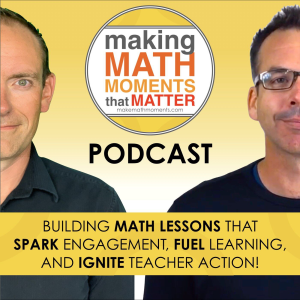
Apply to be a Featured Interview Guest
Book a Mentoring Moment Coaching Call
Are You an Official Math Moment Maker?
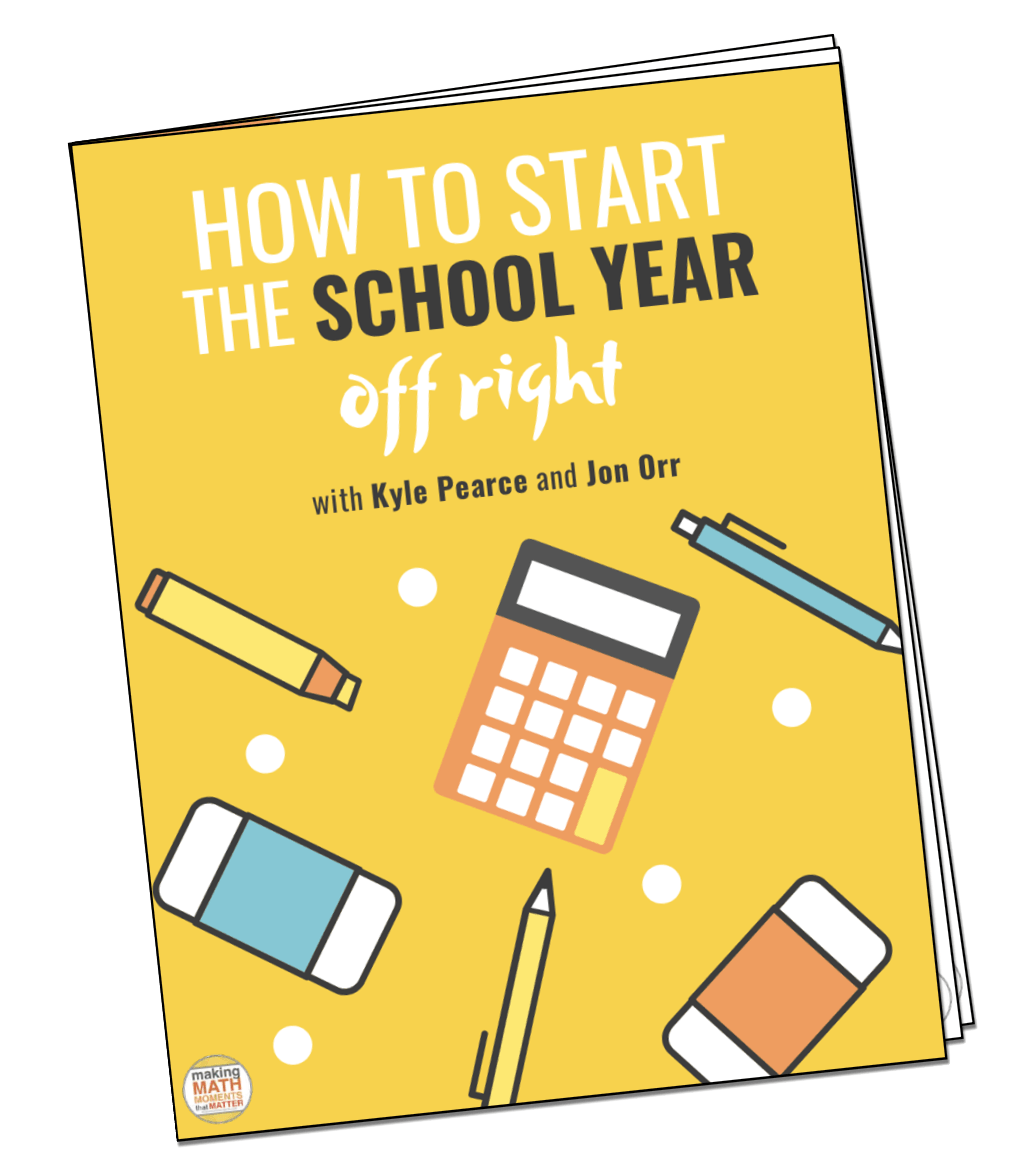
FULL TRANSCRIPT
Jon Orr: Okay, let’s let’s talk about goal setting. Let’s talk about, know, how, you know, narrowing our goals is actually can help us achieve more than we thought. And that’s like a contradictory kind of statement in a way, like the more narrow you go, actually the wider you go, which I think is big, big topic that we’ve been talking about with our with our leadership teams that we’re, you know, we’re supporting across North America. And really, this comes from stage one of the work that we do with them, right is
Stage one is designing goals and measuring those goals. And we have that process where we help them get clear on what goals should be the goals that they’re focusing on and what areas should they focus on. everybody who goes through this process gets to a point where they think they’re setting the right goals, but the goals they’re actually setting aren’t.
good enough, you know, we have to we have to help them get a little bit more clear, a little bit more narrow. And so what happens is they think they’re setting a goal. They’re like, hey, we’re to set a goal. We’re going to improve fluency. We’re going to improve like productive struggle. We want more productive struggle in our classrooms. It’s like it feels like that’s a good area. But what’s happening, right, is like people and leaders are going these are broad goal. Like these are way too broad of goals to actually make impact this year or next year. Like that’s
That’s what we’re seeing when we’re starting this kind of design and measure process is that everybody kind of gets hung up with this. let’s dig into the goals and why broad goals actually are, because it sounds like we don’t want, like, here’s the problem that I think why people make broad goals is they’re like, I don’t want to exclude anything. I don’t want to like, I want to work on everything. But we know when we work on everything, we work on nothing. So like, there’s one point right there of like, why broad goals don’t work. But in your opinion, Yvette, tell us why
Like what these ambitious goals that we all have, like why are they not good?
Yvette Lehman: Fluency, think, is a great example of, you know, of course, I think that there isn’t a single district that would argue that a goal is for students to be more fluent and true fluency, you know, not memorization of fact, but automaticity of facts where they are flexible and, you know, efficient, all those great things. But if we actually start to unpack fluency,
We’re talking about fluency with whole numbers. We’re talking about fluency with fractions and decimals and percent as operator. We’re looking at all four operators. We’re looking at positive and negative numbers like fluency. Although of course it’s the outcome that we want students to be more comfortable working with all four operators. How do you actually turn that into an immediate next step that you’re going to work on next week?
and the week after and a month from now. And sometimes I think when we try to tackle something that’s so ambitious, we don’t know where to start. So we just don’t start. And we end up focusing a lot on pedagogy rather than actually focusing on deepening our content knowledge.
Jon Orr: Got it. Yeah. Yeah. It’s like, it’s like when you this is the thing. It’s like, I’m because you don’t want to exclude anything. And you keep your your goal too broad. And then when you go to start the work, you’re like, well, how do I fix and support teachers on implementing fluency in the classroom? have this grade. I have this grade. I have this grade. I have these topics. I have these topics. I’ve got multiplication. I got division. Like there’s a lot specifically that we need to support. And then
it becomes overwhelming and going like, how do I actually take a step in the direction of supporting that? we are not and because we’re not specific enough of what outcome we’re trying to achieve and we don’t know exactly like exactly what topic or what grade band we want improvement on or what the what the actual measurable is going to be. What is it that we’re trying to change? Then we get caught up in the in like all the day to day. And this is where like the firefighting comes in because it’s like
All of a sudden, you know that you’re supposed to be working on these big goals, but because you don’t know where to start on strengthening it, because you’re trying to strengthen it, everybody’s all at the same time, you let all the firefighting take over. You’re like, okay, I’m gonna focus on this checklist, little checklist today. I’m gonna focus on this little thing today. I’m gonna just knock it off my list. I’m gonna knock this off my list. And you do all the things you feel like you’re being productive. So you do all of that. And then at the end of the day, you feel like you’re productive. Like you’ve got like, did this today.
but this actually you did something, but you also didn’t work on the most important thing that you thought was most important, which may be in this case, you the example we’re talking about here is like strengthening fluency across the district. Like that’s a fine say zone to work on, but it’s not specific enough for you to actually make impact on this year. Like you have to get more specific. And what I just heard you say is if you’re going to choose fluency as a main focus zone,
for the work you’re going to do for this year, next year, next five years, maybe the next 10 years, because you could probably safely say you’re not gonna wanna go away from that particular goal for a long time. And I wouldn’t recommend you switch your big focus out, know, the focus zones too often. But if you are gonna focus on fluency, what I heard you say is get real specific, not only on like what grade band we should be looking at.
Jon Orr: but what maybe topic we should be looking at. Like, it this year we’re gonna focus on subtraction? And that’s it? Is that good enough? Like, is that as specific as we should be getting?
Yvette Lehman: Well, and I love that example. let’s say, you know, as an example, yes, of course, overall, we want to fluency for all students, but we decide that for the next few months, we’re going to make a commitment to invest time and resources into grades two and three and the subtraction, the operation of subtraction. And we’re going to really explore the structures of subtraction. Oftentimes students think about subtraction and you you say, what is subtraction? They say it’s takeaway.
or we often see the standard algorithm for subtraction being introduced really early on without a lot of conceptual understanding. So what if instead we made a commitment to ourselves and to our district that we’re going to strengthen our understanding of subtraction in grades two and three? We’re going to see subtraction as both comparison and removal subtraction. We’re going to look at strategies like counting on using partials. We’re going to look at constant difference. We’re going to really understand
when we use the operator subtraction. And what I really like about a goal this specific is that it’s achievable. I can actually do that work and confidently say at the end of two months, three months, six months, that I’ve made a difference in that area. And what I love about a content specific goal like subtraction is that oftentimes when we lift the hood,
on a concept like subtraction that people thought they understood. But you actually reveal through this collaborative learning opportunity that maybe we didn’t know as much as we thought we did about subtraction. What that’s going to do is it’s going to generate a natural curiosity about the other operators. So you’re basically not only strengthening subtraction, you’re
revealing the need to build conceptual understanding for educators because you’re you’re exposing the fact that maybe what we thought we knew about subtraction was not broad enough or it wasn’t deep enough and one thing that I like about let’s say subtraction or it could be fractions working with fractions it could be division as these are concepts that teachers often find difficult to teach it’s like students tend to struggle with subtraction in primary grades
particularly scenarios that are looking at difference more than less than. So we’re simultaneously strengthening our fluency, but through a concept that might be challenging for teachers, challenging for students.
Jon Orr: And, and what happens, right, like what you’re saying is like, these things aren’t in isolation, you know, like this by foot, because I think we get worried about like, is, if I’m only like, am I only going to work like, what about all the other teachers that are not teaching subtraction this year? Or it’s like, what if I teach subtraction? It’s like, is it just subtraction? And what about teachers who are past subtraction? Like, you get worried about helping everyone. And I think there’s a few things about that worry that we should dispel.
You know, I think and we’ve seen this from other districts who have done this work is that when you get specific, you’re saying when you get specific, you because they’re not in isolation, you’re going to inspire that group of teachers. Let’s say you picked a particular grade to strengthen that strand up with those those teachers. Those teachers are in like that fly automatically in the flywheel. They’re in this flywheel where they’re working on their skills and their content skills.
you’re saying that’s going to spill over into other content areas or other strands because they have this natural curiosity. Like if I didn’t know this, then what about multiplication? What about division? And they have the epiphanies that they could do start to spill over. Those also change pedagogical moves because if you can create the math epiphany around a content strand, it usually will always create an epiphany around what pedagogical moves. So you’re not, you’re not only focusing on say the fluency strand, you’re
focusing on the pedagogical moves that come with it, which could be all, all topics like the moves that you use for that particular topic are just as good to use when you get to say algebra and patterning. So like, there’s that flywheel that each of those teachers is is involved in. It’s because it gets easier for them to have the epiphanies easier for them to build their skills. And then next time, whatever strand you pick after you hit that goal, and you have a new goal,
it’s easier for those teachers to build their capacity because they’ve already got this like flywheel happening. But then there’s also like in a way this bigger flywheel, you know, and because what, because if you can, because I think one of the drawbacks that I think a lot of us have when we’re designing professional development is I can’t, I can’t in good conscious just focus on the grade three teachers. What about the grade six teachers? What about the grade eight teachers? Are we really, are we really going to leave?
the support out for there. Like how do I, if I have coaching involved, like can I just coach everybody? And if you’re gonna take that approach, what’s happening is you’re going, you know, you’re going too wide with your resources in a way, and you’re not, building capacity for long-term sustainability. Because if you, let’s say, help those teachers in those grade bands, and the flywheel approach is happening for those teachers,
Think about one year from now, how strong they are gonna be with that particular strand and their pedagogical moves. Like, they’re not only going to have like that strength, but they’re also having strength on like lesson design and leadership and working with teachers and coaching skills. All of this is being developed because you went narrow and you’re now building capacity within the district for teacher leaders, for, you know, teachers to kind of like.
help other teachers in their own schools. This is kind of like, in a way, you’re doing that train the trainer model without training the trainer. You’re just building capacity with groups of teachers, which spills over to strengthen other groups of teachers. I think that’s, we just had this conversation outside of this podcast by kind of saying, by helping a group of teachers build their capacity, you’re building capacity within the district.
Whereas if you say, try to go wide and go like, want to design professional development for everyone. And I’m going to try to only make sure I include everybody or everybody in these particular grades in all schools, you’re spreading yourself or you’re spreading your resources very, very, very thin. And when you do that, you’re Yes, you can pat yourself on the back and say, I helped everybody move. But it’s almost like you’re helping
300 people or 300 educators like get 1 % or half a percent better. But if you go narrow, you know, with the group of teachers to help them with their capacity around that content knowledge that feels narrow, you’re helping like 30 teachers, 50 teachers get like 20 % better. like, like generally, as a whole, that’s better for long term sustainability. Because now like, let’s say two years from now, three years ago, if you keep focusing on that, model that strategy, those structures, you’re you’ve got you’ve got way more capacity as as teachers for leaders for understanding what’s what’s important in mathematics, which is great for like turnover for creating leaders in your buildings, like, like this is the long term sustainability, the the flywheel approach to going narrow actually helps you stay wider.
Yvette Lehman: And one thing that as leaders, I think we need to be, I guess, continuously seeking information because we are the ones maybe determining along with the rest of our leadership team where to start and with what grade and what concept. And even that can be challenging if we’re not really clear on
math development, what content matters at what grade band, what are the key standards at that grade level. And so if we are the people who are in the decision-making seat, I think there’s ways for us to position ourselves to be, you know, better equipped to determine what that starting point is. And that’s, know, of course, like engaging with the broader mathematics community, looking to research, asking people who are doing this, we’re creating communities.
with other districts, with other leaders, so that we feel confident that we are making the right first step. And I would argue, for sure.
Jon Orr: Mm hmm. I think that’s a worry, right? Like, it’s a worry. It’s like, okay, if I’m if I’m in, like, my gosh, like a year or two years ago, I was a classroom teacher, now I’m responsible for designing professional development for an entire district or, you know, a grade, you know, maybe it’s a middle school across the district, or maybe it’s elementary across the district. And they’re like, my gosh, that’s a lot of weight. And now I have to get real specific. What happens if I pick the wrong goal?
Yvette Lehman: Mm-hmm. Yeah, so that’s where I would certainly say, you know, we have a professional responsibility to constantly be improving our own content knowledge, engaging in mathematics. We always argue, John, like doing the math ourselves as well, so that we are positioned to give that guidance. But at the end of the day,
I truthfully wonder if it’s like starting on something and it being the wrong thing is better than not starting at all. Because sometimes I do think that our goals are just so broad and so ambitious that we focus on the pedagogy, we focus on the surface level work and we don’t actually truly get to strengthening our mathematics content knowledge. And we know that that will have the biggest impact on teacher capacity.
Jon Orr: Hmm. True.
Yeah. Yeah, it’s there. The research is there to accompany it. And then I think we get scared, you know, like, what does that look like? Like I’ve probably have a history of only helping in pedagogical moves and not content knowledge moves. And I probably only been engaged in professional development that had pedagogical moves and not content knowledge moves. So what does it actually look like when I want to help a teacher strengthen that up?
And how do I do that? Right? Like how do I design the support for a teacher to build, say, that content knowledge with making sure that feels like it’s the right support for them as well? And I think that’s where sometimes we get hung up. like, it’s hard, and it’s going to take a lot of work and a lot of work. And I think this is why going narrow is better than wide. Because when you stay wide, what I just said becomes the scary part.
But when you’re like, if I could just say by the end of the year, I’m to help my grades three teachers strengthen their own skills and build their confidence. And then here’s the scale I’m going to use on the look for scale of like what confidence looks like on traction. Then that feels more attainable. And therefore, I’m working towards that. then when I hit it, I’m just going to make a new goal. And we’re going to strengthen another area or we’re going to strengthen a grade band. Like I know one of our
One of our groups, you know, we support this during year three of the program and year three of the work that they’ve been doing. And this is the exact pathway they took. They, they focused on some grades to start and specifically around certain models and strategies to use in say grade one and grade five. And because they had two coaches and they were going to work in those two areas. And then every year they moved the target, moved to say the, the, the focus area, the focus grade band to strengthen these different areas.
and they make huge progress in each of these grade bands because they went real specific.
Yvette Lehman: So that’s a perfect example of let’s maybe just share one of these narrow goals and get really precise in our own language. So let’s say we’re noticing that many of our students are relying on the standard algorithm for subtraction, but they really don’t understand what they’re doing and they’re making mistakes because they’re, missing steps, making errors, and they really are not able to judge the reasonableness of their answer.
They can’t tell you whether or not that’s a reasonable answer to the subtraction scenario that they are tackling. So then maybe our goal is to find a solution to that problem. So then we start to look at, okay, well, what do we know about subtraction? What do we understand about the structures? What are strategies beyond the standard algorithm? How would we introduce them? That’s work on its own, just that one idea.
but it’s work worthwhile doing and it’s also achievable. Like I could feel really good at the end of the year if I made a shift where students weren’t solely relying on the standard algorithm for subtraction and they could use reasonableness to judge their solutions and to articulate whether or not that made sense. That would be a massive win. And as you already mentioned, John, know, subtraction doesn’t live in isolation.
There are so many other aspects of that rely in particular on comparisons of traction and reasonableness. So it will have a long-term impact. that’s kind of our, you know, maybe food for thought or consideration for you if you are a district leader or in a coach role or consultant role and you’re just feeling like you’re kind of spinning your tires and you know what you want the goal to be at the end. You know you’re working toward this big long-term outcome of having students be more flexible and fluent with all four operators, but you’re not making a lot of traction, our suggestion is maybe let’s get more specific, more narrow, be precise about I’m going to work with this grade, with this set of strategies, with this operator, because the great thing is you can do that and actually realistically see the results you’re hoping for this year.
and then you can continue to add goals and add goals. then, you year after year, you’re building that capacity long-term, but at least, you know, the change you’re hoping to see will be visible this year.
Jon Orr: Love it, love it. Yvette just said, go narrow to go wider. Also, when we work with our leaders on this, one of the questions, we ask them right off the bat when they’re starting to design how to get more narrow and which to narrow in on is, in an Yvette kind of just kind of hinted towards this, which is, what specific thing when you get to the end of the year, being like, if we just did that one thing.
just that small one thing that we would be like, that would be huge for the work that we are doing in this area or zone that we’re strengthening across the district for long-term results. What is the one thing? Because that can help pinpoint the one thing. I think Yvette would say, subtraction is your thing. also, what is the one thing, if you can answer the one thing and then narrow it down even a little bit further? then you’ve got a key result to hit for this year.
Yvette Lehman: Yeah. And I mean, that’s just it. And we did talk a little bit too, and this will be our, you know, last last consideration maybe is you can also make that one thing really relevant for your teachers. But if you have a scope and sequence and they’re following a scope and sequence and you look ahead and say, I know that fractions are coming up at the beginning of next term. I know that fractions are a concept that we typically, you know,
struggle with and it’s an area of achievement that we want to reinforce. So then focus on that. Focus on, you know, if it’s like fluency and you want to be operating with fractions, then like whatever it is, I don’t know that there’s necessarily a wrong choice. I’d rather just pick something and really invest the time in deeply understanding it rather than trying to do like a superficial priority on everything at once that doesn’t really amount to much in the end.
Jon Orr: All right, let’s leave it with that. Go forth, figure out what is your goal, get narrow and then get more narrow and then get more narrow after that. Take care everyone. And we look forward to hearing your thoughts on what goals are you going to hit and what goals are you going to make this year?
Thanks For Listening
- Book a Math Mentoring Moment
- Apply to be a Featured Interview Guest
- Leave a note in the comment section below.
- Share this show on Twitter, or Facebook.
To help out the show:
- Leave an honest review on iTunes. Your ratings and reviews really help and we read each one.
- Subscribe on iTunes, Google Play, and Spotify.
DOWNLOAD THE 3 ACT MATH TASK TIP SHEET SO THEY RUN WITHOUT A HITCH!
Download the 2-page printable 3 Act Math Tip Sheet to ensure that you have the best start to your journey using 3 Act math Tasks to spark curiosity and fuel sense making in your math classroom!
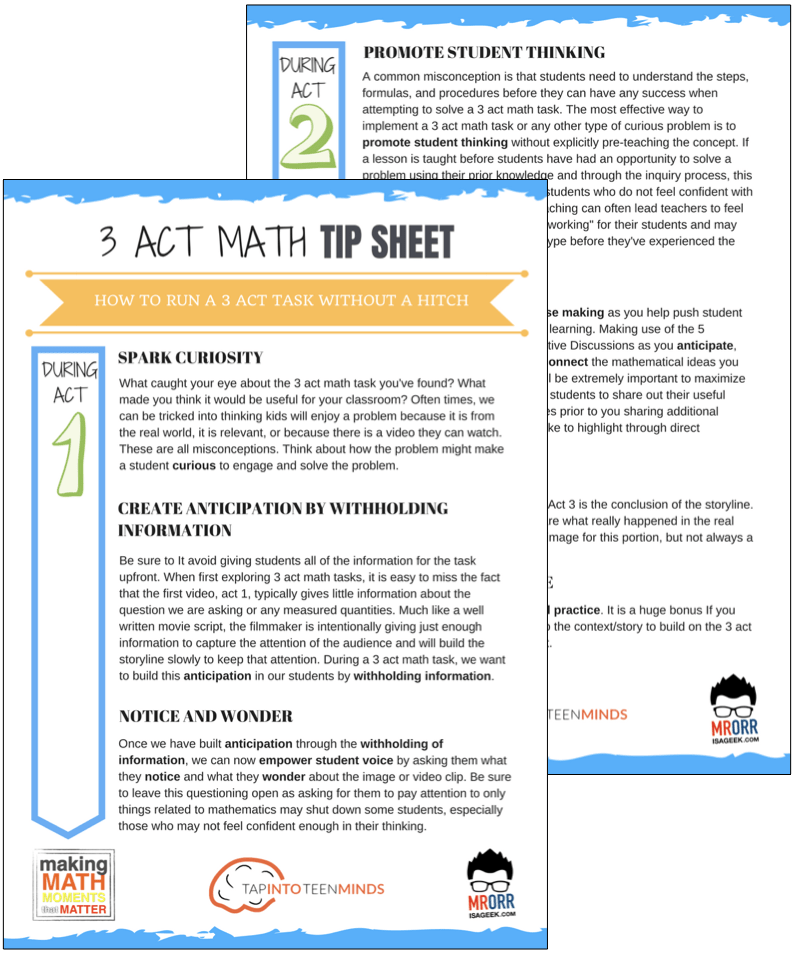
LESSONS TO MAKE MATH MOMENTS
Each lesson consists of:
Each Make Math Moments Problem Based Lesson consists of a Teacher Guide to lead you step-by-step through the planning process to ensure your lesson runs without a hitch!
Each Teacher Guide consists of:
- Intentionality of the lesson;
- A step-by-step walk through of each phase of the lesson;
- Visuals, animations, and videos unpacking big ideas, strategies, and models we intend to emerge during the lesson;
- Sample student approaches to assist in anticipating what your students might do;
- Resources and downloads including Keynote, Powerpoint, Media Files, and Teacher Guide printable PDF; and,
- Much more!
Each Make Math Moments Problem Based Lesson begins with a story, visual, video, or other method to Spark Curiosity through context.
Students will often Notice and Wonder before making an estimate to draw them in and invest in the problem.
After student voice has been heard and acknowledged, we will set students off on a Productive Struggle via a prompt related to the Spark context.
These prompts are given each lesson with the following conditions:
- No calculators are to be used; and,
- Students are to focus on how they can convince their math community that their solution is valid.
Students are left to engage in a productive struggle as the facilitator circulates to observe and engage in conversation as a means of assessing formatively.
The facilitator is instructed through the Teacher Guide on what specific strategies and models could be used to make connections and consolidate the learning from the lesson.
Often times, animations and walk through videos are provided in the Teacher Guide to assist with planning and delivering the consolidation.
A review image, video, or animation is provided as a conclusion to the task from the lesson.
While this might feel like a natural ending to the context students have been exploring, it is just the beginning as we look to leverage this context via extensions and additional lessons to dig deeper.
At the end of each lesson, consolidation prompts and/or extensions are crafted for students to purposefully practice and demonstrate their current understanding.
Facilitators are encouraged to collect these consolidation prompts as a means to engage in the assessment process and inform next moves for instruction.
In multi-day units of study, Math Talks are crafted to help build on the thinking from the previous day and build towards the next step in the developmental progression of the concept(s) we are exploring.
Each Math Talk is constructed as a string of related problems that build with intentionality to emerge specific big ideas, strategies, and mathematical models.
Make Math Moments Problem Based Lessons and Day 1 Teacher Guides are openly available for you to leverage and use with your students without becoming a Make Math Moments Academy Member.
Use our OPEN ACCESS multi-day problem based units!
Make Math Moments Problem Based Lessons and Day 1 Teacher Guides are openly available for you to leverage and use with your students without becoming a Make Math Moments Academy Member.
Partitive Division Resulting in a Fraction
Equivalence and Algebraic Substitution
Represent Categorical Data & Explore Mean
Downloadable resources including blackline masters, handouts, printable Tips Sheets, slide shows, and media files do require a Make Math Moments Academy Membership.
ONLINE WORKSHOP REGISTRATION
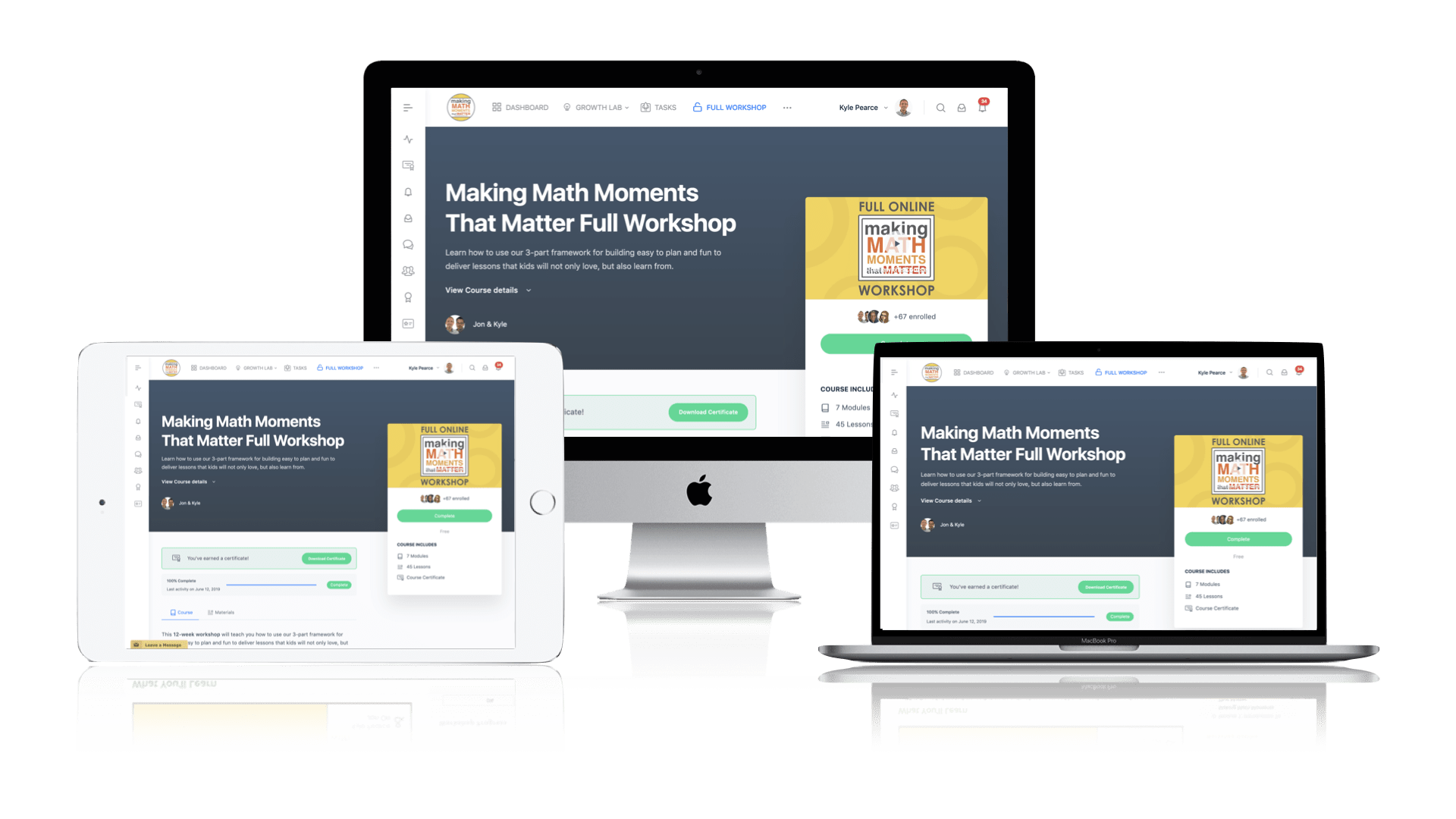
Pedagogically aligned for teachers of K through Grade 12 with content specific examples from Grades 3 through Grade 10.
In our self-paced, 12-week Online Workshop, you'll learn how to craft new and transform your current lessons to Spark Curiosity, Fuel Sense Making, and Ignite Your Teacher Moves to promote resilient problem solvers.
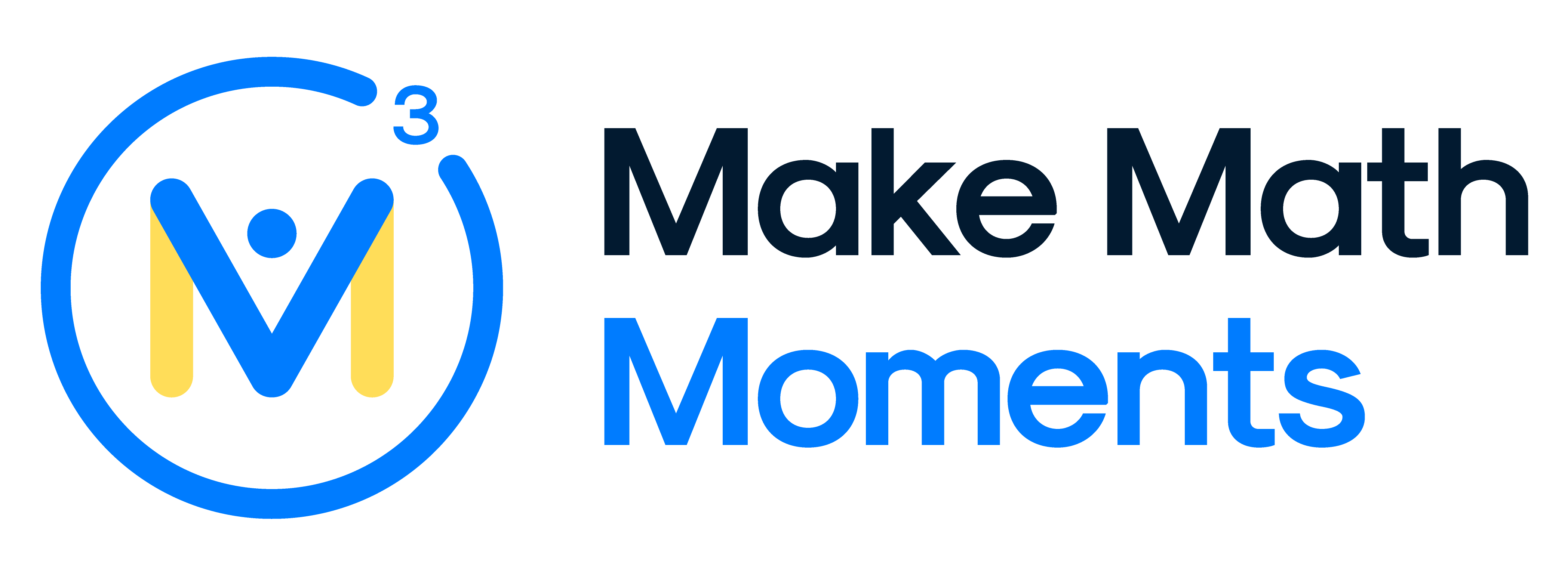



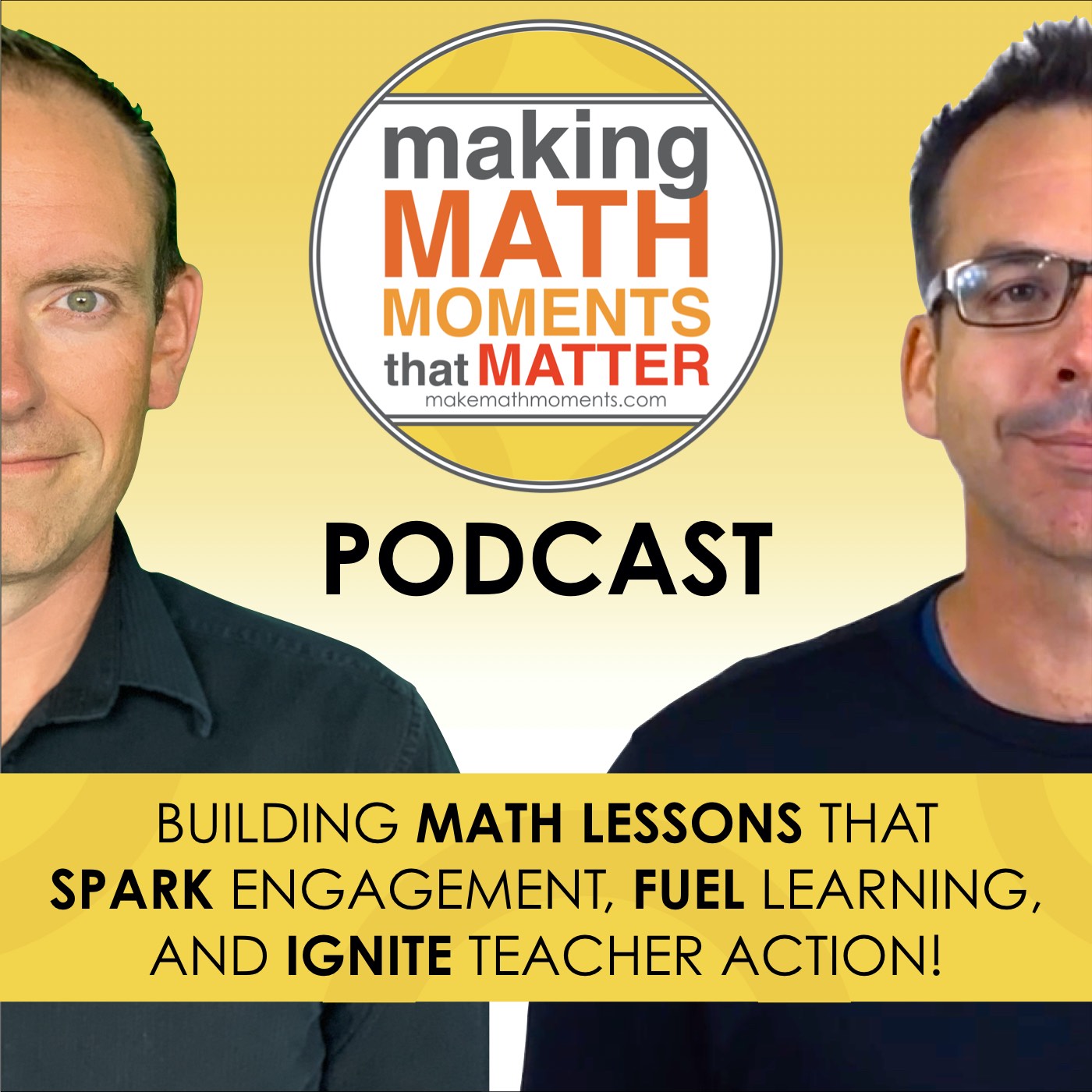
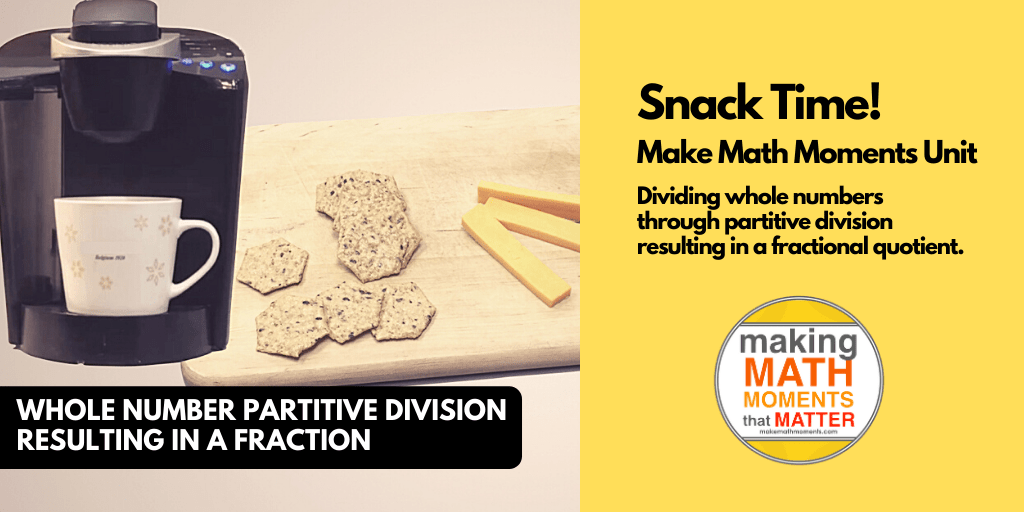
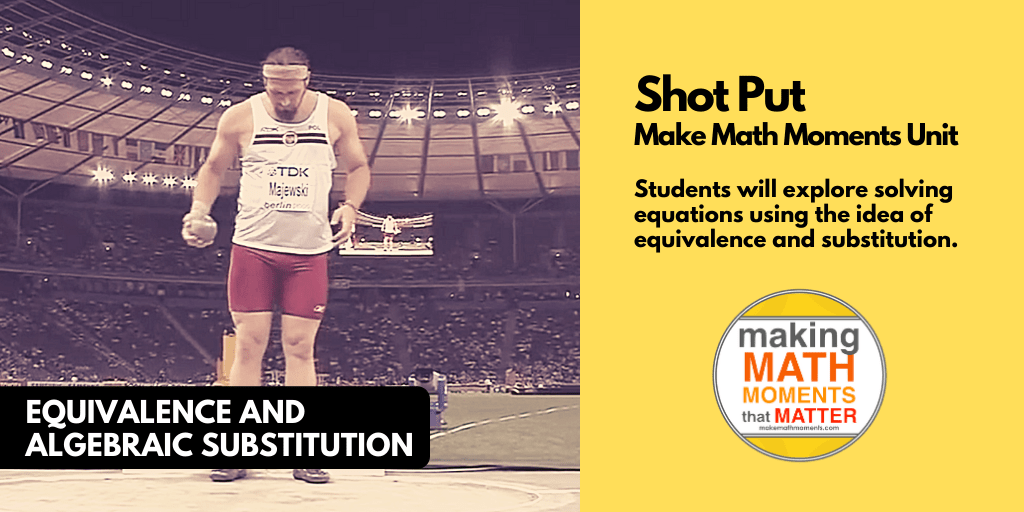
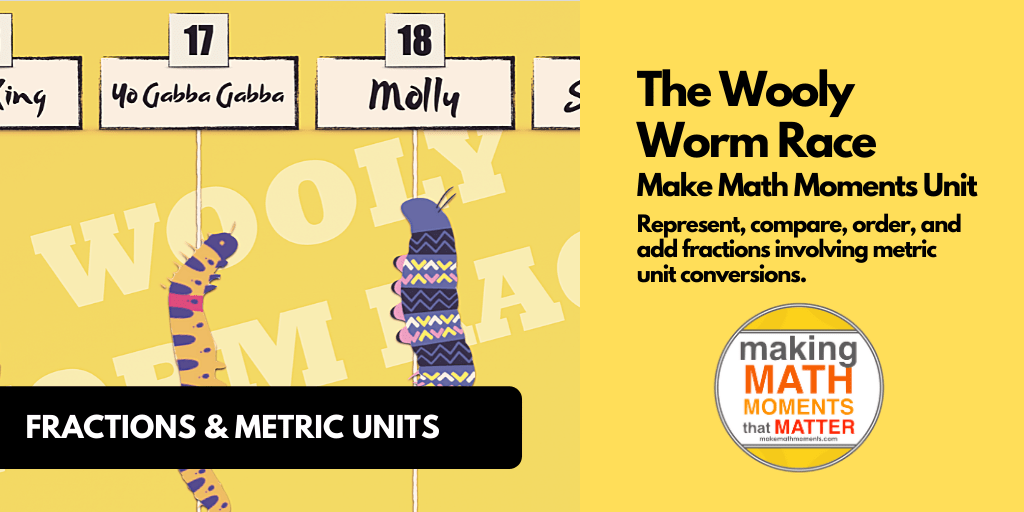
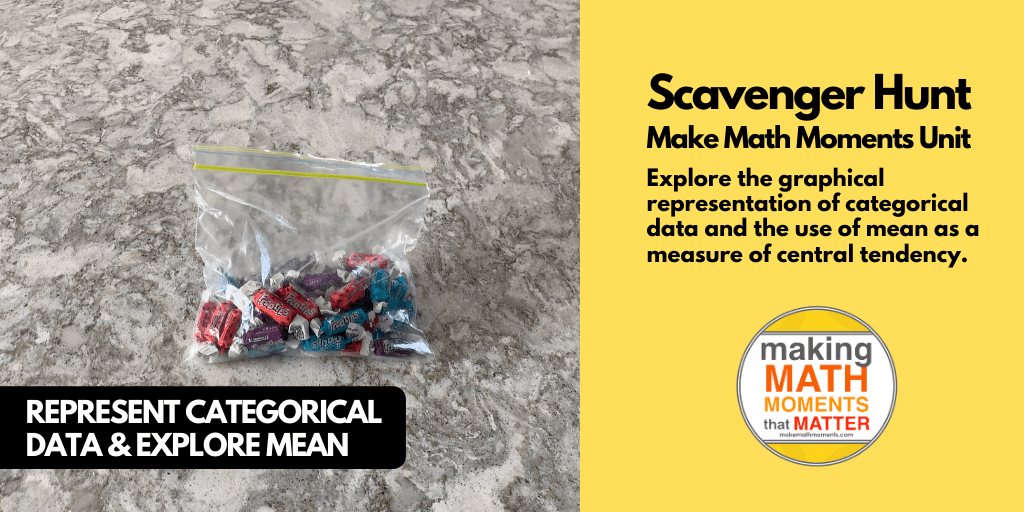
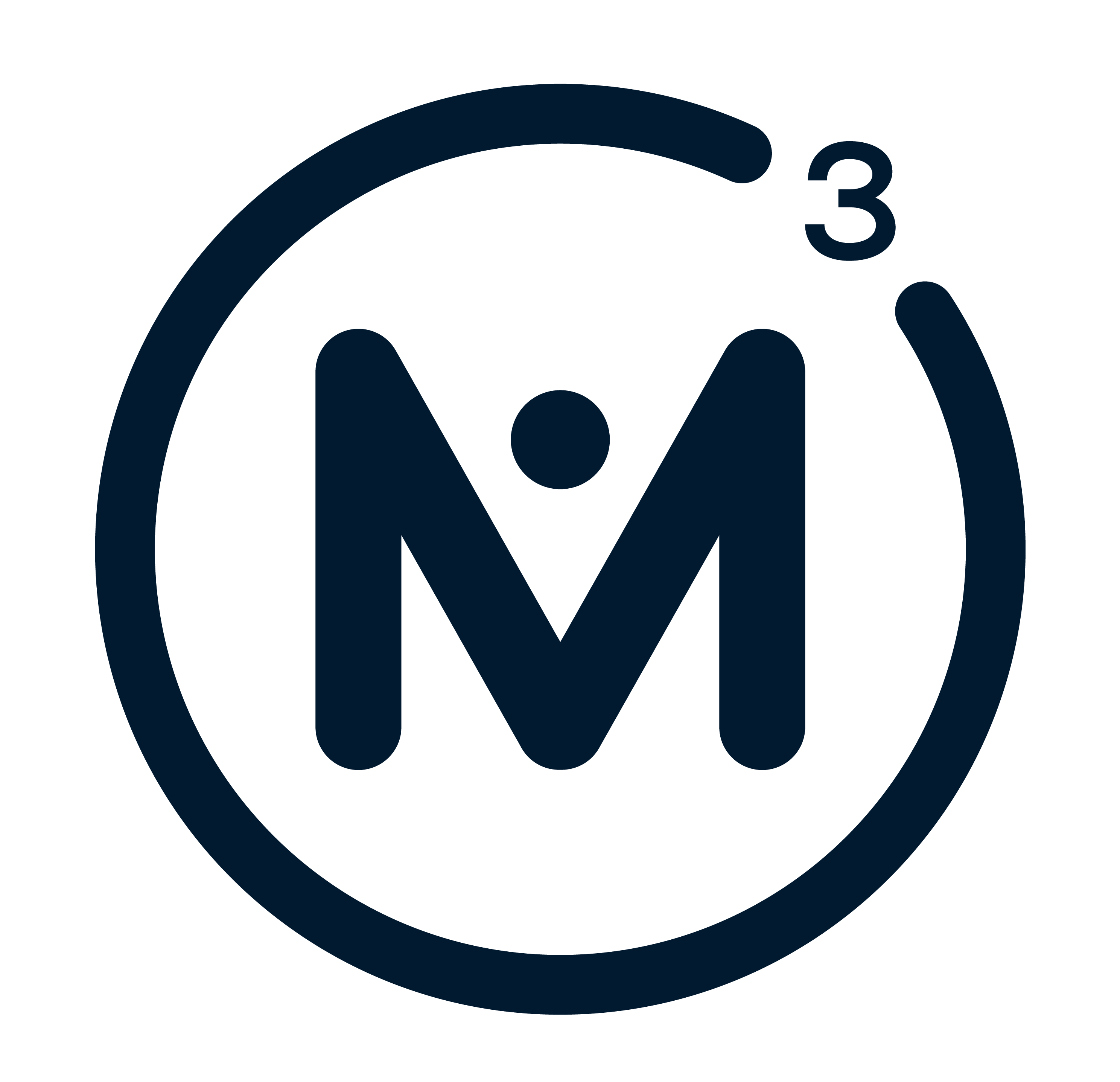
0 Comments